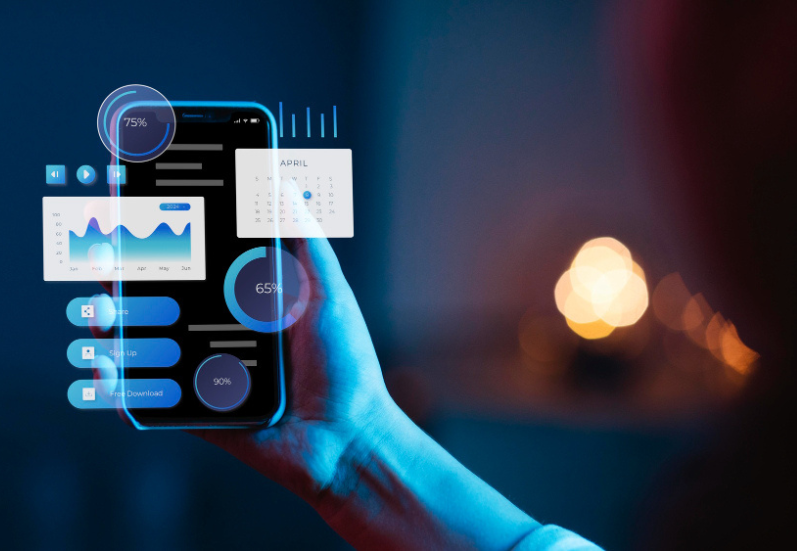From Automation to Intelligence: The Tech Movements Steering Tomorrow’s Marketing
25 November 2025
6 Mins Read

- Is Predictive Marketing The Future Of Marketing? What Are The Most Important Elements Of Predictive Marketing?
- 1. The Rise Of Predictive Engines
- 2. Contextual Experiences Take Center Stage
- 3. Intelligent Search Is Redefining Discovery
- Marketing Analytics Are Becoming Autonomous
- Smarter Automation Replaces Rigid Workflows
- Creative Workflows Are Entering a Hybrid Phase
- What This Means for Marketers
- Things To Remember About Predictive Marketing
Digital marketing has kinda hit this weird point where the old version of automation—stuff like scheduled emails or preset workflows—feels almost nostalgic.
What used to feel shiny and new now seems sorta stiff, especially with all these systems popping up that actually learn and try to think ahead.
And honestly, it’s not about piling on more tools; most of us already have too many. It’s more like swapping in smarter tools that can make a judgment call instead of just running chores in the background.
This whole move from plain automation to something closer to intelligence is shaping the next decade in a way that’s hard to ignore.
The tech keeps changing fast (painfully fast sometimes). Still, the general direction is unmistakable: more adaptive, more predictive, and more tuned in to tiny details we didn’t even think to look at before.
Anyway, here are the main tech shifts marketers probably need to keep an eye on—whether they’re ready or not.
Thus, predictive marketing technology has become the future of approaching people. Hence, this article seeks to inform people about how predictive marketing technology can help businesses to scale up.
Is Predictive Marketing The Future Of Marketing? What Are The Most Important Elements Of Predictive Marketing?
The rise of predictive marketing is fueled by multiple elements. Moreover, here is all that you have to learn about predictive marketing and how it can be helpful for businesses.
1. The Rise Of Predictive Engines
Predictive tech is easily one of the biggest behind-the-scenes shifts happening right now. Instead of reacting to what people have already done, these systems are busy guessing what’s coming. And they’re getting eerily good at it.
Predictive analytics looks at old behavior patterns to forecast things like churn, projected customer value, upcoming product demand, or who’s most likely to click “buy” soon.
Brands picking up these tools early usually gain an advantage because they stop guessing so much.
A team with solid predictive models can move ad dollars quickly, adjust campaigns before they tank, and avoid wasting money on stuff that probably wasn’t going to work anyway.
And with everyone fighting for the tiniest sliver of attention, knowing what customers might want—before they say anything—completely changes the game. You stop scrambling. You start steering.
2. Contextual Experiences Take Center Stage
Relevance has basically become the price of admission online. Nobody wants the one-size-fits-all stuff anymore.
People expect content that fits whatever moment they’re in—where they’re standing, what they’re searching for, or what mood they’re in.
Modern systems go way beyond “Hey first name.” They can read intent, sense sentiment, spot device differences, track tiny browsing habits, and sometimes even interpret the emotional tone behind someone’s query.
Because of that, content shifts automatically. Someone seeing a landing page at noon might get a different variation at 9 p.m. without even noticing the switch.
A shopper comparing two products may suddenly get suggestions tailored to micro-actions they barely realized they were doing.
Years ago, this wasn’t even possible because real-time data was basically a mess. Now it’s not. Gartner’s been calling this out for a while—companies digging into contextual intelligence early usually see better engagement and longer-lasting loyalty.
Personalized experiences aren’t a fancy extra anymore. They’re what people expect right out of the gate.
3. Intelligent Search Is Redefining Discovery
Search is going through its biggest identity shift in years. Old-school keyword matching is slowly giving way to systems that actually understand what a person means, rather than what they literally typed.
Generative search—AI summaries, conversational answers, and those zero-click results that sometimes feel like cheating—is changing the way people discover information.
And yeah, the classic “rank-and-hope” SEO strategy feels a bit shaky because of it.
But honestly, it’s not all bad news.
Brands producing rich, useful, nuanced content are the ones that will benefit most as engines lean harder into semantics.
AI-driven search tends to reward clarity, authority, and content that actually helps someone solve a problem—not keyword stuffing.
A lot of teams are already rewriting their playbooks. The Sure Oak SEO + AI strategy is one example, blending the old SEO basics with new generative search models.
Search isn’t just about ranking now. It’s about being pulled into summaries, referenced by algorithms, or even woven into conversational answers.
One notable approach is the Sure Oak SEO + AI game plan, which focuses on aligning traditional optimization with the new landscape of generative engines and intelligent search models.
Marketing Analytics Are Becoming Autonomous
Marketers used to stare at dashboards for hours, trying to spot patterns and make sense of spikes and dips. Intelligent analytics flips this upside down.
Instead of waiting for someone to notice something odd, the system does the noticing—and the explaining—and sometimes the suggesting.
It’s almost like having a quiet data strategist who never sleeps.
These tools can:
- Point out sudden performance changes
- Suggest budget adjustments
- Spot new audience clusters
- Uncover little trends hiding in the noise
- Recommend tweaks to creative assets
The real power here is the speed. Machines can tear through data in seconds while humans… well, we try our best.
And no, this doesn’t replace human intuition. It actually elevates it. Instead of spending your day buried in spreadsheets, you can finally focus on the parts of marketing that require an actual person.
Smarter Automation Replaces Rigid Workflows
Old automation was basically just “if A happens, do B.” But customer journeys aren’t tidy like that anymore—they zigzag all over the place.
Intelligent automation is way more fluid. It doesn’t need someone rewriting rules every five minutes. It adapts automatically when new inputs hit the system.
A few examples:
- Content variations are created the moment they’re needed
- Email flows that twist and shift based on live behavior
- Campaigns that reconfigure themselves when results drop
- Chat systems respond based on the freshest interactions
Those old flowchart-style processes are fading out. Adaptive systems are stepping in, helping brands stay relevant without constantly rebuilding everything.
Creative Workflows Are Entering a Hybrid Phase
AI isn’t killing creativity—it’s giving it more room to breathe. Marketers are using intelligent tools to brainstorm, outline, test, draft, rewrite—basically any step where a second brain helps speed things up.
But the magic still comes from people. AI can spit out text fast, but humans bring the emotional tone, the humor, the weird little quirks that make content actually sound like… well, content.
This hybrid model is becoming the norm. Teams that use AI as an assistant—rather than the entire engine—tend to produce stronger, more compelling work. It’s like having a multiplier on your creative output.
What This Means for Marketers
Shifting from automation to intelligence isn’t just a tech upgrade—it’s a mindset shift. Marketers need to get comfortable testing new tools, interpreting machine-generated insights, and making decisions with more data than they probably asked for.
The strongest teams combine strategic thinking with data fluency and a willingness to adapt.
They understand that tech itself isn’t the strategy—it’s the amplifier that makes the strategy louder.
The brands that thrive will likely be the ones that:
- Lean into predictive analytics
- Focus heavily on relevance and context.
- Build content with semantic depth.h
- Adopt an autonomous analytics tool.
- Use intelligent automation in thoughtful ways.
- Pair creative instincts with AI support.
Things are moving quickly, but the direction is clear: marketing is becoming smarter. Not necessarily more complicated—just smarter.
Things To Remember About Predictive Marketing
The shift from simple automation to full-blown intelligence is one of the biggest transformations marketing has experienced in quite a while.
The earlier brands adjust, the more resilient their systems become when everything inevitably changes again.
Technology isn’t just another add-on anymore. It’s the engine underneath the whole operation. Hence, the sooner marketers prepare for this new reality, the better they’ll navigate the increasingly intelligent digital landscape ahead.

















